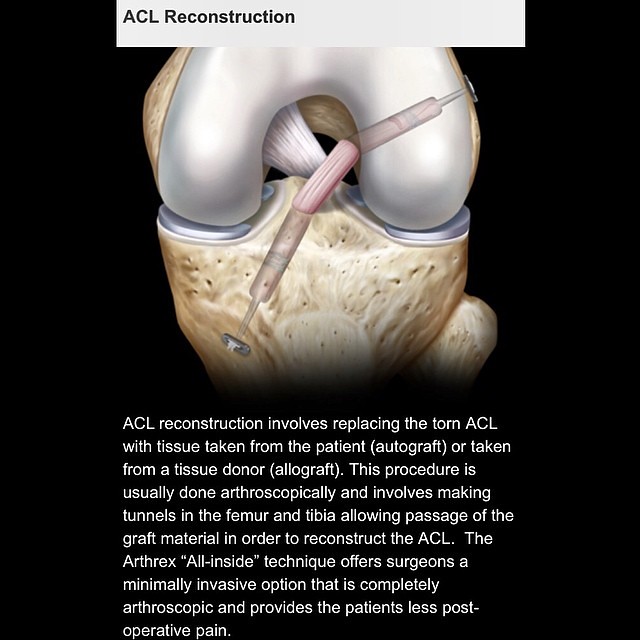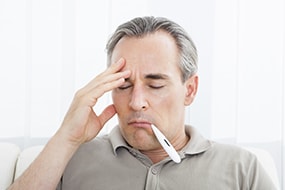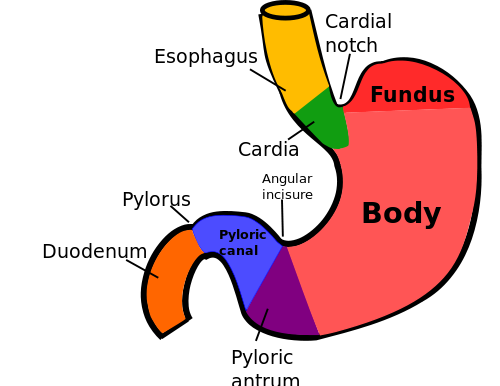A stroke occurs when a blood vessel (an artery) that supplies blood to a certain area of the brain bursts or becomes clogged by a blood clot. Within minutes, the nerve cells from that that area are affected and are lacking oxygen and they die within minutes – hours (depending on the severity of obstruction). As a result, that part of the body that is controlled by the stroke affected area of the brain can not function properly.
If you notice any symptoms of a stroke you must know that it is a medical emergency and immediate treatment is required, just as in the case of a myocardial infarction (a part of the heart muscle dies due to the lack of blood supply to that area). If medical treatment is started soon after the onset of stroke symptoms, the fewer brain cells will die or be affected by the lack of oxygen.
Stroke Causes
Ischemic stroke is caused by a blood clot that blocks the blood flow to the brain, the blood clot can develop in a narrowed artery that supplies blood to the brain or may reach the cerebral circulation after it migrated from the heart or from any other region of the body. Blood clots usually occur as a result of other disorders that cause modifications to the normal blood flow, such as:
- Hardening of the arteries also known as atherosclerosis and it is caused by high blood pressure, diabetes and high cholesterol blood levels
- Atrial fibrillation, or other cardiac arrhythmias (irregular heart rhythms)
- Certain heart valve disorders, such as the presence of an artificial heart valve, a repaired heart valve, valvular heart disease and mitral valve stenosis (narrowing of valvular orifice)
- Heart valve infection (endocarditis)
- The presence of foramen ovale, which is a congenital heart defect (a hole through which blood can enter the left atrium from the right atrium
- Vessel clogging disorders
- Inflammation of blood vessels (vasculitis)
- Myocardial infarction.
Though in rare rare cases low blood pressure (hypotension) may also be the cause of an ischemic stroke. Low blood pressure leads to reduced blood flow to the brain, can be caused by a narrowing of the arteries or damage of heart attack, massive blood loss or a severe infection.
Some surgeries (such as endarterectomy) or other procedures (such as angioplasty) used to treat narrowed carotid arteries may lead to a blood clot at the site where it occurred, causing a subsequent stroke.

Causes Of Hemorrhagic Stroke
Hemorrhagic stroke is caused by rupture of blood vessels and bleeding inside the brain (also called intracerebral hemorrhage) or into the space around the brain (called subarachnoid hemorrhage). Elevated values of the blood pressure for long periods can be the cause of a stroke. Bleeding in the space around the brain can be caused by a ruptured aneurysm or blood pressure that was not kept under control.
Other less common causes of hemorrhagic stroke,are
- Inflammation of blood vessels, which may occur in syphilis or tuberculosis
- Hemophilia
- Injurys to the neck or head that can affect the blood vessels that can be found in these areas
- Radiation therapy treatments used for treating neck or brain cancers
- Cerebral amyloid angiopathy (a disorder in which blood vessels degenerate).
Stroke Risk Factors
The stroke riks factors are changable risk factors and unchangeble risk factors. Certain conditions are proven to increase the risk of stroke, if these conditions can be kept under control, the risk of stroke may decrease.
The stroke risk factors that can be controlled are:
- High blood pressure (hypertension) is the second most important risk factor after age
- Diabetes. About a quarter of people with diabetes die from a stroke. The presence of diabetes doubles the risk of stroke due to damage to the blood vessels that occurs in this disease.
- Elevevated bad blood cholesterol levels (HDL) can lead to coronary artery disease and myocardial infarction which damages the heart muscle (myocardium) which may increase the risk of a stroke
- Coronary artery disease that can lead to a heart attack and a stroke
- Other heart disease such as atrial fibrillation, endocarditis, heart valve disease, cardiomyopathy, patent foramen ovale
- Smoking, including passive smoking
- Physical inactivity
- Obesity
- Certain drugs such as oral contraceptives – especially in women who smoke or who have other bleeding disorders – and anticoagulants or corticosteroids. It seems that women in menopause that follow a hormone replacement treatment have a lower risk of stroke
- Increased consumption of alcohol, because people who drink alcohol excessively, especially those with acute alcohol intoxication have a higher risk of stroke.
- Cocaine usage or other illicit drugs.
Uncontraollabe risk factors:
- Age. The risk of stroke increases with age, each ten years double the stroke risk after the age of 55. At least 66 percent of all people with stroke were aged 65 or more.
- Race. Black and Hispanic Americans have a higher risk than people of other races. Compared with whites, young black Americans, both women and men have a risk of 2 to 3 times more likely to make a stroke and die from this cause.
- Sex. Stroke is more common in men than in women up to 75 years, but after this age women are more affected. At all ages, more women than men will die from a stroke.
- Family history. The risk of stroke is greater if a parent, brother or sister had a stroke or transient ischemic attack present in the past.
Stroke Symptoms
Keep in mind that these symptoms of stroke require immediate medical care:
- State of numbness, weakness or paralysis of the face, arm or leg, usually on one side
- Blurred vision in one eye or in both eyes, spots, double vision (diplopia) or blindness
- Confusion, trouble speaking or understanding words spoken by others
- Gait, dizziness, loss of balance or coordination
- Severe headache
- The ischemic stroke symptoms differ from those of hemorrhagic. Symptoms also depend on the location of blood clot or bleeding and expansion of the affected region.
- Symptoms of ischemic stroke (caused by a clot that has blocked a blood vessel) usually occur in the opposite side of the body. For example, a stroke in the right brain gives symptoms in the left side of the body.
- Symptoms of a hemorrhagic stroke (caused by bleeding in the brain) may be similar to those produced by a ischemic stroke, but differ in symptoms related to high blood pressure in the brain, such as severe headaches, nausea and vomiting, stiff neck , dizziness, convulsions, irritability and confusion
- Symptoms of a stroke may progress over several minutes, hours or days, often gradually. For example, mild weakness may progress to an inability to move the arm and leg on one side.
If the stroke is caused by a large blood clot (ischemic) symptoms appear suddenly, within a few seconds, but if an artery already narrowed by atherosclerosis is blocked, symptoms usually develop gradually, raging from a few minutes to hours or less, in a few days.
In time, if there are more small strokes, the person may experience a gradual change of thinking, behavior, balance or movement (multi-infarct dementia). The symptoms of a small stroke are not always easily recognized. They can be attributed to wrong conditions that can mimic the stroke symptoms.

Stroke Treatment
Initial treatment of a stroke differs because it depends on the cause – whether it was caused by a blood clot (ischemic stroke) or bleeding in the brain (hemorrhagic stroke). Before starting the treatment a head computerized tomography (CT), or a magnetic resonance imaging (MRI) to see the type of stroke. Other tests can determine the location of the clot or bleeding to assess the extent of the brain lession. While determining treatment options, blood pressure will be carefully monitored and oxygen will be administrated if necessary. Initial treatment focuses on restoring the blood flow (for ischemic stroke) or hemorrhage control (in hemorrhagic stroke). As with heart attack, permanent damage due to a stroke often develops in the first few hours.
Ischemic stroke
Emergency treatment for an ischemic stroke depends on the location and cause of clot formation. Measures to stabilize vital signs, including drugs are taken. If the stroke is diagnosed within 3 hours after the onset of symptoms, drugs that dissolve the clots are administrated called tissue plasminogen activator (t-PA) drugs, which could increase the chances of survival and recovery. However, t-PA can not be safely administered to any patient. If the stroke is hemorrhagic, the use of t-PA is extremely dangerous. Choosing to use or not to use t-PA must be evaluated in the emergency room quickly. Aspirin alone or in combination with another antiplatelet drugs can be administrated. However, aspirin is not recommended within 24 hours after administration of t-PA. Other drugs to control blood glucose levels (glucose) or fever and convulsions may be administrated. Generally hypertension is not treated immediately unless systolic pressure is greater than 220 (mm Hg) and diastolic is above 120.
Hemorrhagic stroke
Initial treatment for hemorrhagic stroke is very difficult, efforts are being made to control bleeding, to lower intracranial pressure and stabilize vital signs, especially blood pressure values. Several drugs are administered in the case of a hemorrhagic stroke. Drugs to control blood pressure, decreased brain swelling, blood sugar levels, fever or seizures. Signs of increased intracranial pressure, psychomotor restlessness, confusion, difficulty to perform commands and headaches are closely monitored. Usually surgery is not recommended for controlling mild or moderate bleeding. However, if there was a large amount of bleeding and if the person’s general condition deteriorates rapidly, surgery may be needed to remove the accumulated blood in the brain and decrease the intracranial pressure . If the bleeding is caused by a rupture of an aneurysm, surgery to repair the aneurysm is the only option.
- A metal clip for clipping the aneurysm in order to prevent a new bleeding
- Endovascular embolization, a procedure which involves inserting a small coil inside the aneurysm and block it
Ssurgery decision depends on the location and general condition of the person after stroke.

Ongoing treatment
After receiving emergency treatment and the general condition has stabilized, a treatment aimed at recovery and preventing another stroke is started. It is important to control stroke risk factors such as high blood pressure, atrial fibrillation, elevated cholesterol levels and diabetes. Aspirin or other antiplatelet drugs are recommended. In the case of an ischemic stroke (caused by a blood clot), anticoagulants to prevent another stroke are needed. Also drugs such as statins to lower cholesterol or drugs to control blood pressure are needed.
Drugs that lower blood pressure include:
- Inhibitors of angiotensin converting enzyme (ACE)
- Angiotensin II receptor blockers
- Beta blockers
- Diuretic
- Calcium channel blockers.

















